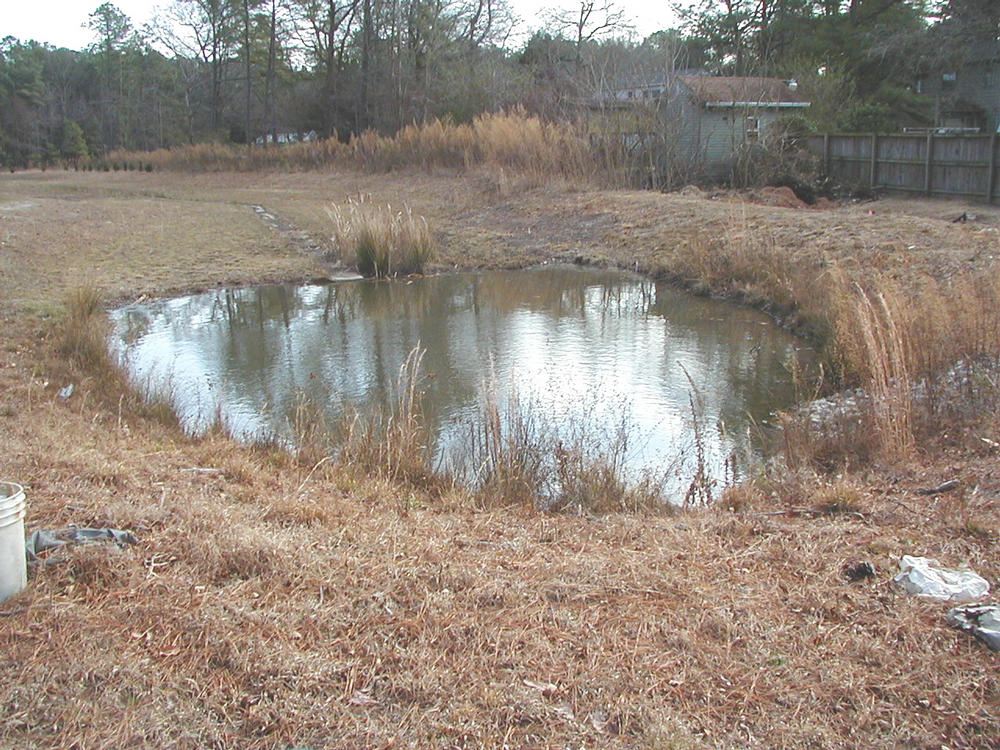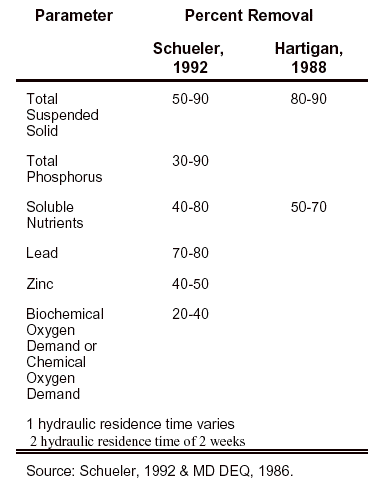
Best Management Practices (BMPs): Natural Wetlands and Wet Ponds
Before moving on to our next technology (wetlands and wet ponds), let's take a moment to answer two questions:
Q: Why should we consider pond and constructed wetland technologies and not simply add stormwater to existing natural wetlands?
A: Pollutants from stormwater can adversely affect sensitive ecosystems:
"...[the] Use of wetlands for biofiltration can actually aggravate existing problems for many wetland wildlife species. For example, in the Chicago region it is not unusual to find 100 to 200 parts per million lead (and other contaminants) in tadpoles (especially in frog species with a 2-year tadpole stage, such as leopard frogs, bullfrogs, and green frogs) found in wetlands receiving highway stormwater."*
One of the reasons for this is the accumulation of seemingly benign amounts of pollutants over extended periods of time, which can lead to adverse effects, through bioaccumulation or an increase in concentration of a pollutant from the environment to the first organism in a food chain.
This begins the process of biomagnification, which is the increase in concentration of a pollutant from one link in a food chain to another higher trophic level. For example, there might be an initial concentration of a chemical in the plankton, which will increase in plankton-eating fish, and may ultimately lead to unhealthy or lethal concentrations in predatory water fowl. Thus, by establishing stormwater-specific wetlands, we are not further degrading the limited wetland environments we have.
By containing pollutants in specifically designed stormwater management technologies, we can preserve and protect the species diversity and ecological well being of our diminishing natural wetlands.
Q: How might we best consider stormwater technology implementation...should it be end of the pipe solutions or smaller fixes which are more thoroughly interspersed?
A: While there are no absolutes, it is suggested by the U.S. EPA that large "end of the pipe" fixes can be expensive in both infrastructure cost and maintenance.
"A landscape with many upland micro-depressional storage opportunities and a large buffering capacity might offer more efficient processing than would a single biofiltration wetland at the downstream end. Each buffer or depressional wetland would [therefore] need to treat a smaller volume of water and contaminants...upland or dispersed stormwater treatment facilities would have significantly reduced long-term maintenance costs and represent a more sustainable approach to management of stormwater."*
*See page 178 in: National Conference on Urban Runoff Management: Enhancing Urban Watershed Management at the Local, County and State Levels; EPA/625/R-95/03 (6.7MB)
Let's move on to our next technology: The Wet Pond
A wet pond is a catchment technology which chiefly functions to settle suspended sediments and collect stormwater. As opposed to a dry basin, which will drain between storm events, the wet pond can hold water year round. Conceivably, wet ponds can be designed
with sufficient storage to serve as "end point" collection. Typically, these will overflow to receiving waters or a lengthy infiltration ditch as can be seen in the following example.
The wet pond illustrated below can be viewed, along with a ranking of 83 other stormwater ponds, in :The Ecological Characterization of Stormwater Detention Ponds in Virginia's Coastal Plain.

Note that the overflow serves as an extended vegetated swale, rather than depositing directly into a receiving water. In
this way, nutrients and pollutants such as Total Suspended Solids (TSS) can be absorbed or scrubbed from effluent in overflow conditions.
Below are typical retention data from the U.S. EPA:

Typical costs for wet detention ponds range from $17.50-$35.00 per cubic meter ($0.50-$1.00 per cubic foot) of storage area.*
*Costing estimates and table taken from U.S. EPA document 832-F-99-048: Technology Fact Sheet: Wet Detention Ponds.
Next >>


